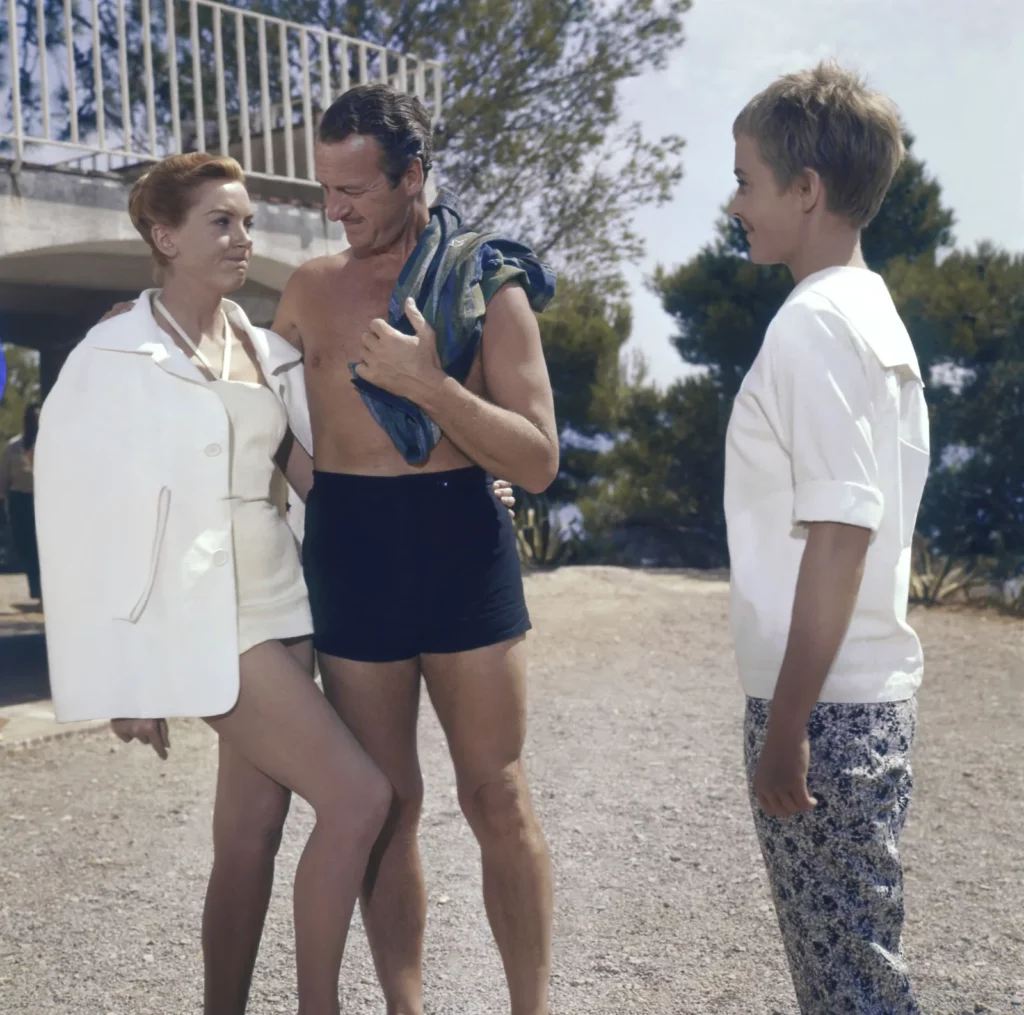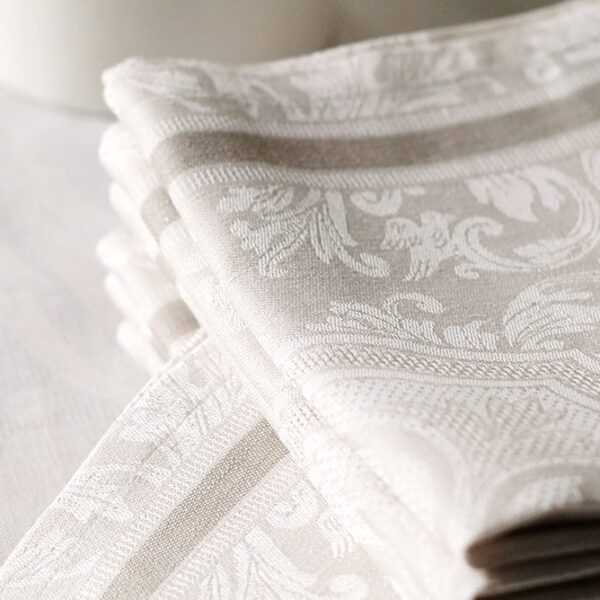Although linen has been somewhat absent from the catwalks over the past 50 years (though not completely excluded), it has tended to make a more pronounced comeback in recent seasons. A study conducted by CELC (Alliance Européenne du Lin et du Chanvre) and search engine Tagwalk, shows that in 2021, 220 looks were presented that included linen, compared with just 129 the previous year. 18.6% of designers presented at least one linen look in 2021, an increase of 49%.
According to Alexandra Van Houtte (founder of Tagwalk), “the material’s potential is exponential. Linen has been on the rise for the past 2 seasons. It ranks 4th among the most frequently used materials, after wool, denim and leather”.
It would seem, then, that luxury brands are keen to use this natural fiber, leading directly to sustainable fashion. Because, as we’ve said over and over again, linen is indeed the most eco-responsible fiber on the market today, thanks to its culture, which requires very few chemical inputs and, moreover, no artificial irrigation.
Its ability to be processed locally (scutching + spinning + weaving in Europe) makes it a first-choice fiber for brands wishing to include more natural fibers in their collections.
An overview of linen products from luxury brands :
What better way to prove that linen is in vogue with the big brands than to show you a few examples of linen products.
From Loro Piana, this delightful children’s bomber in 100% linen. A true masterpiece that reminds us all that linen isn’t just for shirts and jerseys, and can be used for many other types of garments : Children’s bomber 100% linen
Also from the LVMH Group’s Italian label, this elegant polo shirt in linen jersey is ideal for both chic and casual wear : Linen polo shirt
Also from the LVMH group, but this time from the French brand Louis Vuitton, you can admire this sumptuous Gabardine jacket with a patch pocket, here in 60% cotton 40% linen. This composition, made from a sustainable fabric, clearly demonstrates the LVMH group’s desire to produce a few items with a natural fiber : Gabardine jacket
Still in France, but this time from the Jacquemus brand, a minimalist jacket called “Titolo” made from a blend of wool and linen (43% / 57%). Although the brand doesn’t communicate on the subject of eco-responsibility, it does include a non-negligible proportion of natural materials in its production, such as linen and other natural fibers (cotton, viscose, wool) : Minimalist jacket
We’re back in Italy with the Zegna brand, which demonstrates a strong commitment to eco-responsibility with its Oasi Zegna program, and also with the use of a large number of natural fibers, such as linen, wool, silk and cotton. This atypical polo, with its open collar, will allow you to breathe fully during the hot summer weather : open collar Polo shirt
In a more classic style this time, we can take advantage of the thermoregulating properties of linen, which is found in the composition of this shirt, offered by the Parisian luxury brand, Céline : Céline shirt
On the accessory side, linen canvas handbags from Chloé and Yves Saint-Laurent demonstrate that linen can also have its place in accessories : Chloé Woody / YSL linen canvas handbag
To conclude this non-exhaustive list of linen products offered by the major luxury brands, we suggest you take a close look at the very complex 100% linen set made by the Italian brand Brunello Cucinelli : 100% linen set
Thanks to this list, we can confirm that linen does indeed have a place in the collections of the major luxury brands, and that it is possible to combine a natural fiber like linen with responsible fashion.
Linen and luxury have a long history :
Linen was already present long ago in the collections of the major brands, as demonstrated by its use in certain pieces designed by Hubert de Givenchy in the 1950s. Whether for dresses, corsets or lace.
In the photo above, we can admire the use of linen in the creation of this piece between shirt and cape. In the photo below, again from Givenchy, a linen dress.
Since 1861, the company now known as Le Jacquard Français has been using the “Jacquard” technique to weave exceptional linen pieces for tableware and bed linen. With over 160 years’ experience in the textile industry, the company is a clear demonstration of the connivance between linen and luxury.
Still in the household linen sector, but with a focus on heavier fabrics, Toile de Mayenne produces fabrics for the furniture industry at its Fontaine Daniel factory in France. Linen is frequently featured in the company’s collections, and the company is recognized for its invaluable expertise in linen weaving, with a workshop totally adapted to this material. Temperature and humidity are meticulously regulated to ensure that weaving takes place under optimum conditions.
The company stands out for its versatility and ability to carry out 100% made-to-measure projects, thanks to its team of decorating professionals who come to your home to bring your most beautiful projects to life. A know-how that has stood the test of time and developed over the years.
European linen is more than just a luxury – it’s a story of royalty. In the 17th century, France’s King Louis XIV, a great lover of novelties and fashion, fell in love with linen undergarments. It was from this period that the term “lingerie” was coined.

Linen and luxury are definitely linked by their shared history.
Why is linen making a comeback in the world of luxury ?
There are several reasons why linen is increasingly being reused in the collections of major luxury brands :
Thanks to the expectations of consumers, many of whom now prefer sustainable and responsible fashion, the major brands have a duty to offer collections that are consistent with market demand. The environmental impact and CO2 emissions caused by the use of synthetic fibers are now being criticized, and the luxury goods industry has a duty to set an example, since it is the industry that will be setting the trends for years to come.
Over the past few years, linen has also been enjoying good press, as many players have decided to communicate on this fiber and its various properties, which had tended to be overlooked. Today, its use is making sense among discerning consumers, in search of style, but also in search of technicality.
Beyond its properties and eco-responsibility, linen is a luxury fiber. It’s a fiber that requires a great deal of attention, precision and finesse in its cultivation, harvesting, retting, scutching and spinning, as well as in its weaving and knitting. It’s not that it’s fickle, it’s just that, like all exceptional products, it’s difficult to get to grips with and requires a great deal of know-how. Because to do things meticulously, you have to be meticulous.
Safilin is part of this quest for the most perfect know-how, constantly striving to improve its spinning process, so as to be able to offer flax yarn with the best performance on the market.


